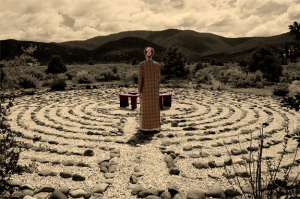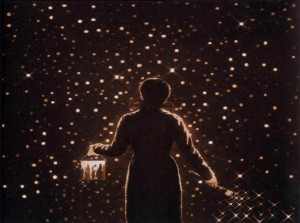 The Yogabliss on-line Moving into Meditation class met this morning. Our hearts have been deeply touched by the struggles that are going on around us. Lives are being lost in violence, in illness and in the poverty that makes it difficult for people to get the food, healthcare and security they need.
The Yogabliss on-line Moving into Meditation class met this morning. Our hearts have been deeply touched by the struggles that are going on around us. Lives are being lost in violence, in illness and in the poverty that makes it difficult for people to get the food, healthcare and security they need.
George Floyd was murdered on May 25th. The following day marked the beginning of a wave of daily protests taking place in large and small cities throughout our country. Policy brutality, particularly against African Americans, has been with us a long time. Many Americans are taking to the streets to protest racial injustice chanting the names of black men and women killed in recent years, including Trayvon Martin, Tamir Rice, Michael Brown, Eric Garner, Philando Castile, Breonna Taylor and many others.
I have to take a deep breath here to remember each of these names is a life filled with other lives unimaginably changed by loss.
Our reflections included the STOP practice created by Rhonda Magee, a law professor and meditation instructor. Rhonda is a facilitator of trauma-sensitive, restorative Mindfulness Based Stress Reduction (MBSR) interventions. She explained how her work helps to minimize the effects of social-identity-based bias in her Tricycle Magazine article, Making the Invisible Visible. We also heard the moving words of poet and writer Maya Angelou. You can hear her complete poem, A Brave and Startling Truth, read aloud by astrophysicist Janna Levin as part of the Universe in Verse project. (Scroll down the page and you will find a SoundCloud box for the audio.)
I mentioned a beautiful talk, Courageous Presence with Racism, given by meditation instructor and author Tara Brach. This talk moved me deeply. I plan to listen to it every day this week as a support for my personal practice of understanding my personal biases and conditioning as the relate to race.
Relaxed Reflection
 We’ll start by tuning into what is true for us right now – cultivating an embodied awareness with Rhonda Magee’s practice called STOP. We can use it anytime anywhere – especially when we are experiencing fear, stress, vulnerability. We can use it when we are having difficult conversations. We can use STOP any time we’re feeling distress – to help us create space to observe our feelings; and to meet our reactivity without judgment; and to access our inner resources. It can help us transform our reactivity to responsiveness.
We’ll start by tuning into what is true for us right now – cultivating an embodied awareness with Rhonda Magee’s practice called STOP. We can use it anytime anywhere – especially when we are experiencing fear, stress, vulnerability. We can use it when we are having difficult conversations. We can use STOP any time we’re feeling distress – to help us create space to observe our feelings; and to meet our reactivity without judgment; and to access our inner resources. It can help us transform our reactivity to responsiveness.
Create a comfortable seat – where you can feel grounded. Sitting upright – sensing your strong back; your sit bones and legs meeting the earth. Broaden your collar bones and relax your shoulders. Release any tightness in your arms and hands. Relax your jaw and let your senses be open. Feel yourself pausing. Know that you are stopping.
While we Stop – notice any way you’ve experienced difficulty most recently. As much as you can access some of this difficulty in this little while. Bring it to mind. Bring it to heart.
Now we Take. We take a conscious breath: A deeper breath so that you can feel your belly expand. As you continue to breathe deeply and slowly notice the sensations of being here, now. Come back to feeling your strong back, pelvis and legs grounded on the earth, supported by the earth as you feel relaxed and steady breathing.
Observe. Observe what’s arising inside you, including any thoughts, emotions, or sensations – any tension, unsteadiness, butterflies or even numbness. Notice where you feel these as sensations in your body. No right or wrong about what you are feeling . . . just opening to what is true . . . Now broaden your awareness to take in the difficult circumstances you’ve been dealing with. . . . Notice how you can be in this situation without being ruled by it. . . . Feel your steady breathing and let there be space around it.
Sense your inner resources by offering compassion and loving kindiness to your self. What does it feel like to give yourself more space, more time? What does it feel like to offer yourself compassion? Can you take it in? Release any tension that you can. Perhaps you connect with an intention to minimize suffering in this time – your own and so many others in these difficulties. As you calm down, open to the choices you have . . . how best to respond for all concerned . . . how to best move forward from here. . . .
Presence. Feel your presence . . . in presence you can proceed with this intentionality . . . You can take the next step in your day from this place of inner strength and even wisdom. You can proceed with presence.
Even in the heat of a moment you can STOP. Stop. Take a breath. Observe what you’re feeling and access your inner resources, your intention. Proceed in presence. You can move through intense feelings and set them aside for a moment knowing you can reflect on them more deeply at a later time.
If you like you can change your position to a more relaxed, restorative pose – lying down or propping yourselves up on pillows.
 We are drawn here to practice not just mindfulness. We are drawn by our compassion and knowledge that for us to truly flourish we work toward a world in which all beings flourish. We must always be engaged in relieving suffering in our world. In Rap on Race, James Baldwin remarked: “We’ve got to be as clear-headed about human beings as possible, because we are still each other’s only hope.”
We are drawn here to practice not just mindfulness. We are drawn by our compassion and knowledge that for us to truly flourish we work toward a world in which all beings flourish. We must always be engaged in relieving suffering in our world. In Rap on Race, James Baldwin remarked: “We’ve got to be as clear-headed about human beings as possible, because we are still each other’s only hope.”
In her Tricycle Magazine article, Making the Invisible Visible, Rhonda writes:
Even when we consciously believe otherwise, research has shown that implicit bias is pervasive. Most of us hold biases based on perceptions associated with racial identities. And because whiteness has been the dominant and most valued of racial identities, a majority of us hold biases favorable to white or lighter-skinned people . . . When stressed out, or when operating on automatic pilot, we often retreat into the ways in which we have been trained.
. . . Practicing mindful awareness of these aspects of our conditioning and habits of the mind helps us to know what we are up against within ourselves as we seek to make change in the world. The capacity to recognize and accept where we are and to investigate what must be changed to minimize the harm that our own views and blindspots cause others is essential to the work of racial justice. And the capacity to do all of this with as little attachment and identification to the outcome is essential to true liberation.
 Again, I welcome you to this moment . . . stopping to feel . . . to breathe . . . to observe your response to these messages . . . what they bring up for you . . . no right or wrong about what you are feeling . . . just opening to what is true . . . Now broaden your awareness allow your true feeling to be . . . Feel your steady breathing and let there be space around it. Can you extend a patient loving kindness to your self? Can you accept this kindness? If you like you can place a hand over your heart as a way of feeling comfort. In this presence, connect with that strong, wise part of yourself . . . that part of your being that aspires that all beings be free of suffering. . .
Again, I welcome you to this moment . . . stopping to feel . . . to breathe . . . to observe your response to these messages . . . what they bring up for you . . . no right or wrong about what you are feeling . . . just opening to what is true . . . Now broaden your awareness allow your true feeling to be . . . Feel your steady breathing and let there be space around it. Can you extend a patient loving kindness to your self? Can you accept this kindness? If you like you can place a hand over your heart as a way of feeling comfort. In this presence, connect with that strong, wise part of yourself . . . that part of your being that aspires that all beings be free of suffering. . .
In his book, The Five Invitations, hospice carer, teacher and author Frank Ostaseski writes:
. . . When fear speaks, courage is the heart’s answer. . . . Life does not always present itself in ways that are right or reasonable. . . . we are rarely in control of . . . twists and turns of fate, and most especially not of our deaths. . . .
The Buddhist tradition describes
. . . “great and courageous bodhisattvas” . . . beings who . . . have the fortitude to stand with suffering . . . able to maintain a courageous presence while they are afraid. They open to fear and are willing to hold it, learn from it and be transformed by it. . . . fear serves as a catalyst, a doorway to compassion and a pathway to transformation for all beings who are afraid. . .
 The willingness to sit with fear is an act of courage. We just danced with it by conjuring that which challenges or disturbs us. Our fears are human. We can reflect on how our fears might be narrowing our vision or restricting our lives to what is comfortable and familiar – do we continually travel down the same habit trails? Do we react to defend the our identities before considering something someone is trying to tell us? These are also very human tendencies. Can we feel the fear of conflict and disapproval long enough to learn what a life afffirming response might be? Can we relax our vigilance enough to take those risks that will allow us to reach out to others with understanding?
The willingness to sit with fear is an act of courage. We just danced with it by conjuring that which challenges or disturbs us. Our fears are human. We can reflect on how our fears might be narrowing our vision or restricting our lives to what is comfortable and familiar – do we continually travel down the same habit trails? Do we react to defend the our identities before considering something someone is trying to tell us? These are also very human tendencies. Can we feel the fear of conflict and disapproval long enough to learn what a life afffirming response might be? Can we relax our vigilance enough to take those risks that will allow us to reach out to others with understanding?
This is the practice of courageous presence. Staying with the experience, breathing calmly, steadily; the mind’s operations are revealed. We can gradually relax as the beliefs, assumptions, memories and stories begin to surface. We can defuse our reactive impulses.
And finally, from Maya Angelou’s A Brave and Startling Truth which flew to space on the Orion spacecraft and which Angelou dedicated to “the hope for peace, which lies, sometimes hidden, in every heart.”:
We, this people, on this small and drifting planet
Whose hands can strike with such abandon
That in a twinkling, life is sapped from the living
Yet those same hands can touch with such healing, irresistible tenderness
That the haughty neck is happy to bow
And the proud back is glad to bend
Out of such chaos, of such contradiction
 We learn that we are neither devils nor divines
We learn that we are neither devils nor divines
When we come to it
We, this people, on this wayward, floating body
Created on this earth, of this earth
Have the power to fashion for this earth
A climate where every man and every woman
Can live freely without sanctimonious piety
Without crippling fear
When we come to it
We must confess that we are the possible
We are the miraculous, the true wonder of this world
That is when, and only when
We come to it.
